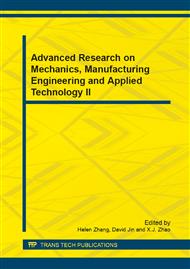p.164
p.173
p.177
p.181
p.185
p.189
p.193
p.197
p.201
Simulation and Experimental Study of Floating with Engineering Mechanics on Box Girder Steel Interior Formwork Used in the High Speed Railway
Abstract:
During the construction of high speed railway box girder, the interior formwork’s floating problem is always been a big common quality fault plagued the construction in the process of concrete pouring, this leads to the roof thickness of box girder arising, the harm is great. This paper combined the construction project of Hebang single linear 32 meter interior formwork, according to the actual condition of the construction, proceeding the simulation analysis and experimental study of floating date on box girder interior formwork. Using the solidworks2010 establish the mode of box girder interior formwork, then, import the mode to the workbench14.5 proceeding simulation analysis. The simulation analysis of interior formwork maximal floating date is 10.67 millimeter, while the measured date is 10.63 millimeter, the deviation is 3.2%. The result manifests the feasibility of the simulation analysis of interior formwork floating date, this provide a reference to the structure optimization of the interior formwork used in the high speed railway.
Info:
Periodical:
Pages:
185-188
Citation:
Online since:
April 2014
Authors:
Price:
Сopyright:
© 2014 Trans Tech Publications Ltd. All Rights Reserved
Share:
Citation:


